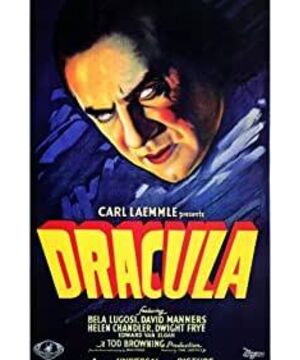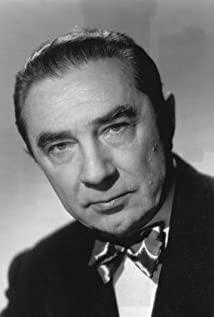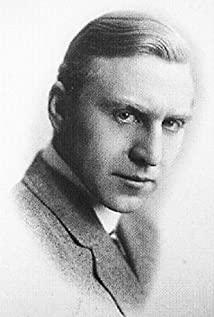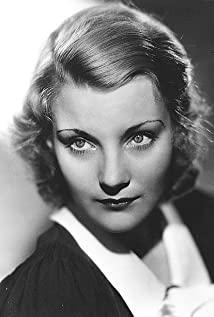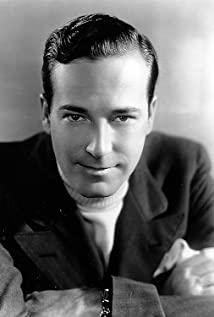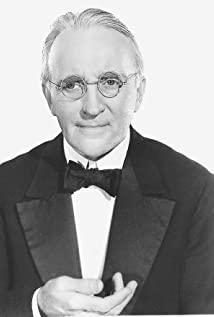According to rumors in the film industry, Bela Lugosi could barely speak English when he was chosen by Universal as the protagonist of "Dracula the Vampire". According to the previous plan, this role should be played by Lon Chaney (Lon Chaney) in the silent classics "The Hunchback of Notre Dame" (1923) and "The Phantom of the Opera" (1925) After being successful, it was a very wise decision to choose him. But he passed away when the filming of "Dracula the Vampire" was about to begin, so the mysterious 49-year-old Hungarian replaced him. He once played the protagonist in the Broadway version of "Dracula the Vampire" in 1927. There must be an exaggeration in the legend, because the Hungarian immigrant Lu Gesi had lived and worked in the United States for ten years before making this movie, but even so, his way of speaking dialogue is still like a person who cannot adapt to English—— Perhaps in his lonely Transylvanian castle, Dracula had centuries to learn English, but he had very few opportunities to practice.
Obviously, it was Rugersey's performance and Karl Freund's photography that made Tod Browning's work such an influential Hollywood film. Among all vampire movies, the greatest is FW Murnau’s silent film "Nosferatu" (will be written in this book), but Murnau’s work is almost a complete and independent dead end, a single masterpiece. . (When Werner Herzog remade "Nosferatu" with Klaus Kinsky in 1979, he was so in awe of the original that some scenes were shot in the same place. ) The visual appearance of the Browning version of "Dracula the Vampire" was inspired by the dark Gothic style of the Mornau version. German photographer Frent knew this well because he worked with Mornau in "The Humblest" . Front is crucial to the creation of many amazing effects in the film, such as reaching Count Dracula’s castle, entering the horrible interior space of the castle, and the hand protruding from the coffin and the mouse hiding in the crypt. Shots influenced by "Nosferatu".
The novelty of this movie is the sound. This is the first sound film adapted from a novel by Bram Stoker. And somehow, Earl Dracula would be even more terrifying when you could hear him—not a non-human monster, but a complete individual. His sentence that took a lot of effort to clarify laughed at the living room society (drawing Customs and practices of room society). Here, Ru Gexi's accent and clumsy English are an advantage.
Everyone thinks Ru Gexi is a strange, deliberately acting man, who likes to draw attention to himself with his stylized behavior. He turned his foreign identity into a wealth, and his eerie and self-deprecating features were prominently displayed in Hollywood and New York. After the success of "Dracula the Vampire", he often appeared formally in public, wearing a silky cloak, as if he was still playing a role. Ru Gexi became addicted to drugs in his later life and was forced to become a comical self-imitator. The last moments of his life have a brief glimpse in "Ed Wood" (Ed Wood, 1994), which is set during the filming of Ru Gesi's posthumous work.
There are more than thirty movies with the theme of the vampire Dracula. On a deeper level, there is something about this legend that fits the movie well. Maybe it is a combination of pornography and fear. The vampire's attack was not particularly sexual, but drinking the victim's blood made his hug the closest in the world. There is no doubt that there is an instinctive connection between losing virginity (and soul) and becoming an immortal race. Vampires are like graceful rape in slow motion. Violent creatures will fascinate you gracefully and make you surrender in fascination.
The vampire myth has been put on the screen so frequently, and its expressions are so diverse (the most recent one was Francis Ford Coppola’s "Frightening Four Hundred Years" [Bram Stoker' s Dracula, 1992]) that its The content has become like the lyrics of an opera or a Shakespeare script: we know the story and all the rhythms, but the main concern is the style and production process. Later, all serious Dracula movies refer to Lu Gesi’s performance instead of the previous Max Schreck (Max Schreck), the latter’s "Nosferatu" is more non-human, farther away from us, like A skeleton ghost. Ru Gexi has deep sunken eye sockets (Frent uses tiny light spots to make them even more weird) and shiny black hair. He has created one of the most influential film performances, leaving us with a difference. His impression of Dracula’s films for many years was influenced by it—especially in the Hammer horror series with Christopher Lee as the protagonist. He played this role at least seven times.
If the visual image of the movie and the performance of the protagonist are both influential, the dialogue is the same. Many great dialogues in the film are chanted:
"I never drink... alcohol."
"For those who haven't even spent their entire life, you are a smart man, Van Helsing."
"Listen to them, the children of those nights. Listen to the music they play."
Every movie fan is familiar with this story. Lanfield (Dwight Frye [Dwight Frye]) is a British real estate agent who visits Transylvania to sell a London property to the earl. He very much hoped to make this deal, even if the name Dracula caused fear among the villagers, it failed to arouse his vigilance. He survived a horrible journey without a coachman, and then plunged headlong into his own destruction. The establishing shot of the shocking interior of Dracula's Castle was almost entirely influenced by the German expressionist tradition. Dracula received the guests with sinister elegance and handed him food and... wine. Then Langfield prevailed, and he took a boat back to England with the deadly coffin on board (this is another passage deeply influenced by "Nosferatu"). The ghostly ship drifted into the harbor. Every passenger except Lanfield was obviously dead, and he had become a lunatic.
In London, vampires use the blood of strangers they meet at night. These scenes are partly derived from the legend of Jack the Ripper. Then he mixed into the opera private room of Dr. Thurward (Herbert Bunston [Herbert Bunston]) and used conspiracy to introduce himself to the upper class. The Doctor owns Carfax Abbey, right next to the shelter where the unfortunate Lanfield (giggles, swallows spiders for their blood) is imprisoned. Dracula also met Thurward’s daughter Mina (Helen Chandler [Helen Chandler]), her fiance John Hack (David Manners [David Manners]) and her friends Lucy (played by Frances Dade). Finally, the vampire hunter Dr. Van Helsing (Edward Van Sloan [Edward Van Sloan]) joined them, and he explained that the level of detail in the blood-sucking behavior may exceed the needs of the plot.
The scene that took place in the Monastery of Carfax was a low ebb after Transylvania and the expressionist fears on board. They come from the Broadway play where Rugersey played Dracula for the first time, but they are more influenced by the tradition of the parlor drama (and must be explained as a parlor comedy) rather than the potential charm of blood-sucking behavior. But even here, Browning can add disturbing elements. For example, he used the appearance of bats and the floating of the fog to show the way Dracula played.
The name of director Todd Browning (1882-1962) is crucial to the study of any horror film. Nevertheless, most of his best works are shrouded in the shadow of collaborators. "The Man of Thousand Faces" Ron Chaney seems to be the core creation behind Browning's landmark silent films "The Unholy Three" (1925) and "West of Zanzibar" (1928) force. And Ru Gexi, Front and the theme content are the creative engines behind "Dracula the Vampire". The only film that independently represents Browning's personal creation is Freaks (1932), which is set in a circus juggling. And because it was too shocking, the film has been banned here or there after it was made.
Except for a few short "Swan Lake" melodies, "Dracula the Vampire" was first released without a soundtrack. This leaves an opportunity. I watched a restored version of the film at the Telluride Film Festival in September, and the Kronos Quartet played live the newly created score by Philip Glass. This version can now be seen on the DVD. Purists argue that Browning's initial choice was the best-to use weird sound effects instead of music to reinforce the horror. But "Dracula the Vampire" has been pushed around in so many directions by so many artists, and Glass just followed this tradition and added his own contribution. His soundtrack works very well in a certain way. It not only conveys the emotion of fear, but also hints at the urgency and desire behind the blood-sucking behavior. It arouses the thirst for blood.
Is "Dracula the Vampire" still a terrible movie in 1931? Or has it become an old piece of furniture? The "movie book" series used for retrieval swears that it is "the most frightening and truly scary movie ever." This may be true in 1931, but today, I think the film’s interest is mainly due to technical reasons-stylized performance, photography and setting. Nevertheless, there is a moment in the movie that Ru Gesi slowly approached the sleeping Lucy and brought all the elements of the content together. We thought of that terrible deal: to become an immortal, but a vampire. From our point of view, Dracula is committing an unspeakable crime. But from his point of view, it is a wonderful gift. (Translated by Zhou Boqun)
View more about Dracula reviews


